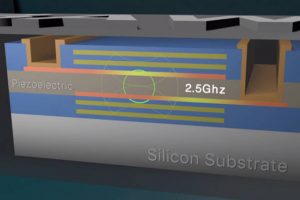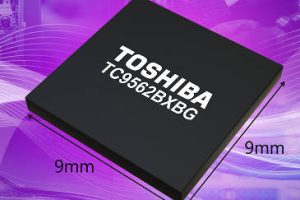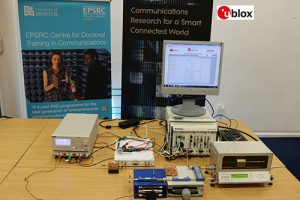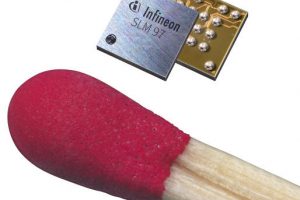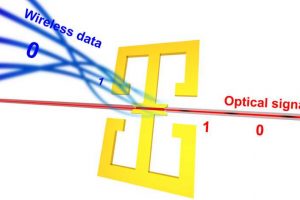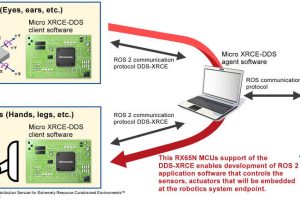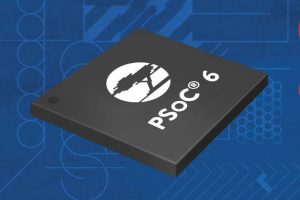Texas Instruments has removed the need for external timing crystals by developing a technique for building high-grade thin film piezoelectric bulk acoustic wave (BAW) resonators within the metallisation of silicon chips, on a CMOS-compatible process that can be delivered in a standard, or even thin, QFN package. The crucial piezo film is sandwiched between two metal electrodes and several acoustic ...
Communications
IoT networking lab for London offers space, equipment and expertise
The Government-sponsored Digital Catapult has set-up a laboratory dedicated to low-power wireless area networks at its London headquarters. Called the Future Networks Lab, it has been created with sponsorship and equipment from BT, IBM, PTC, Semtech, ServiceNow, Siemens and Texas Instruments. Technologies covered include LoRaWAN, SigFox, NB-IoT and LTE-M – and it also has a 5G node and access to the ...
Need a better network? Ask tree frogs
Male Japanese tree frogs communicate with sound, using an internally orchestrated system that lets information get through while also permitting collective choruses and time to rest, according to researchers from Osaka University and University of Tsukuba, and borrowing the technique could reduce packet collisions and power consumption in data networks. The team listened to calling patterns between three frogs over ...
Bridging PCIe to Ethernet AVB and TSN for automotive
Toshiba has announced an automotive chip that can bridge between PCIe and two Ethernet standards: Ethernet AVB and Ethernet TSN, to connect central processors to telematics, infotainment and driver assistance systems, as well as sensors, at up to 1Gbit/s. Called TC9562XBG, “it’s not just a simple hardware-bridge between PCIe and Ethernet”, Toshiba Electronics Europe told Electronics Weekly. “Through the built-in ...
Novel front-end rejects RF self-interference for LTE
U-blox and University of Bristol have developed a tunable frequency-division duplexing RF front-end that combines passive and active self-interference cancellation. With the proof-of-concept demonstrator, an electrical-balance duplexer is used to passively cancel transmitter noise in the receive band, and an active canceller is employed to suppress self-interference in the transmit band. It has been characterised in duplex configurations working between ...
Industrial grade cellular comms SIM is 2.5 x 2.7mm for IoT and M2M
Infineon is claiming a first, with an industrial-grade embedded SIM (eSIM) in a 2.5 x 2.7mm wafer-level chip-scale package (WLCSP). It is aimed at machine-to-machine comms and IoT applications, for example vending machines, remote sensors and asset trackers. “Providing robust quality on a miniature footprint that works even under harshest conditions remains a challenge for silicon providers,” said the firm. Called ...
Plasmonic receiver for last-metres mm-wave comms
Researchers at ETH Zurich have developed a plasmonic receiver that can convert millimetre waves directly into light for an optical fibre. “Our modulator is completely independent of external power supplies and, on top of that, extremely small so that it can, in principle, be mounted on any lamppost. From there, it can then receive data via microwave signals from individual ...
Renesas prepares RX65N MCU for new robot protocol ROS 2
Renesas is aiming at industrial robots by adding support for DDS-XRCE (data-distribution service for extremely resource constrained environments), one of the protocols planned for the ROS 2 communication standard. Specifically an XRCE-DDS client (‘Micro XRCE-DDS’ from eProsima) has been implemented on Renesas’ 32bit RX65N MCUs. “Robot Operating System – ROS – is a key framework that provides libraries and tools ...
Optical demodulator shuns local oscillator without loosing narrowband finesse
Side-stepping traditional laser local oscillator down-conversion techniques, Australian engineers are using acoustic interactions to retrieve frequency and phase information from Gbit/s modulated optical signals. “Our technique uses the interaction of photons and acoustic waves to enable an increase in signal capacity and therefore speed,” said Dr Elias Giacoumidis of the University of Sidney. “This allows for the successful extraction and ...
Cypress adds Alibaba Cloud support to microcontrollers for IoT
Cypress adds support for 'AliOS Things' embedded IoT operating system to some of its microcontrollers
 Electronics Weekly Electronics Design & Components Tech News
Electronics Weekly Electronics Design & Components Tech News
